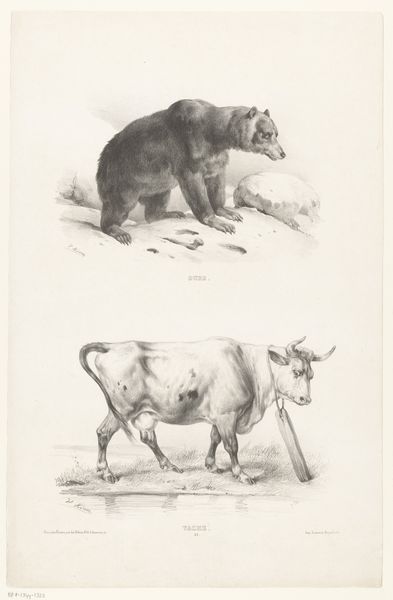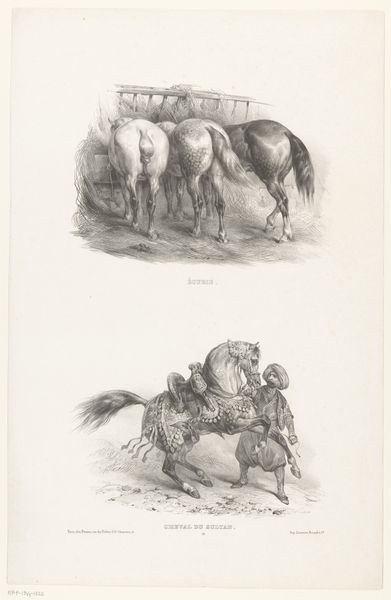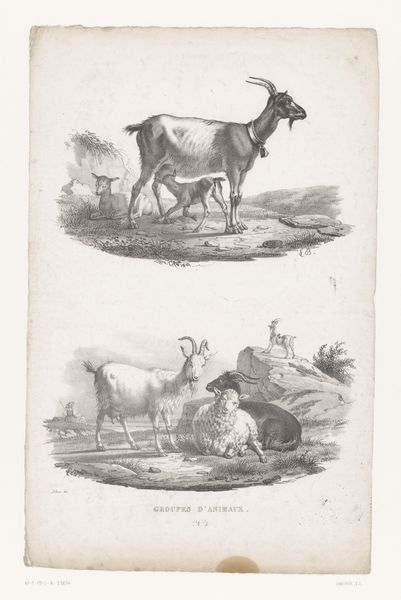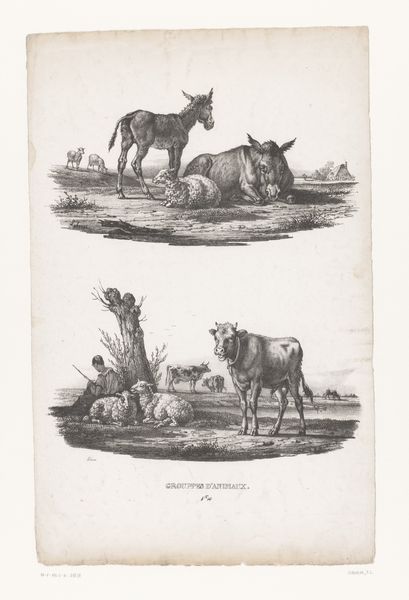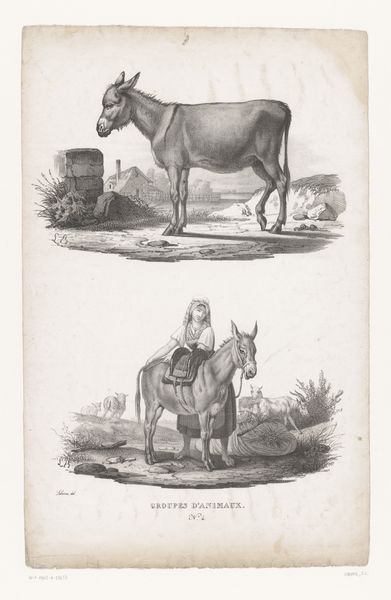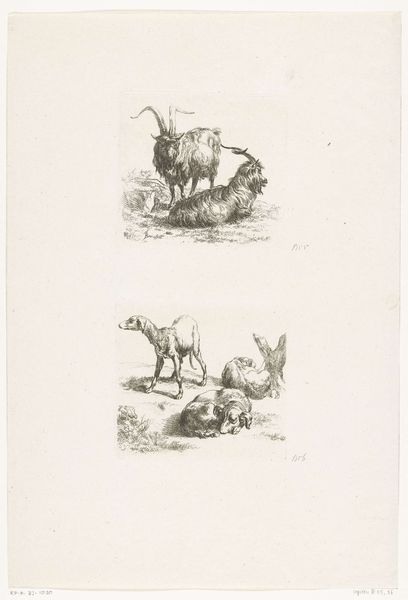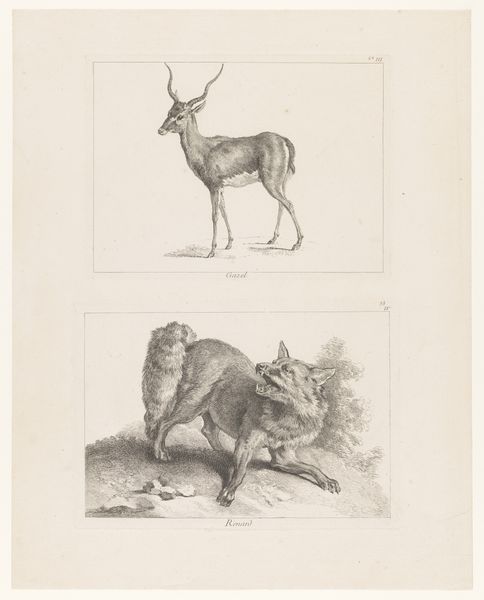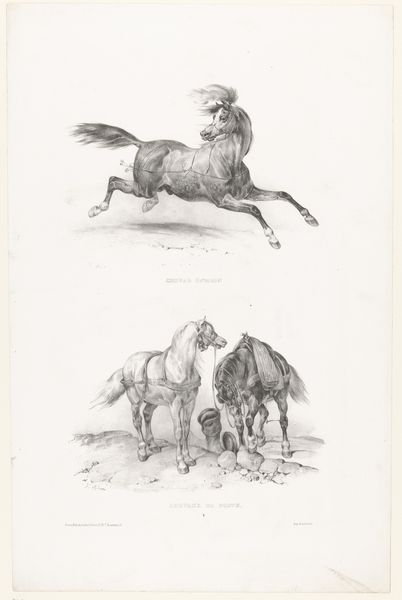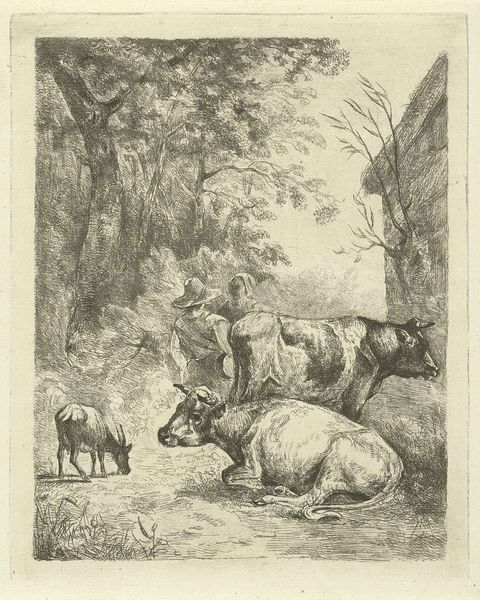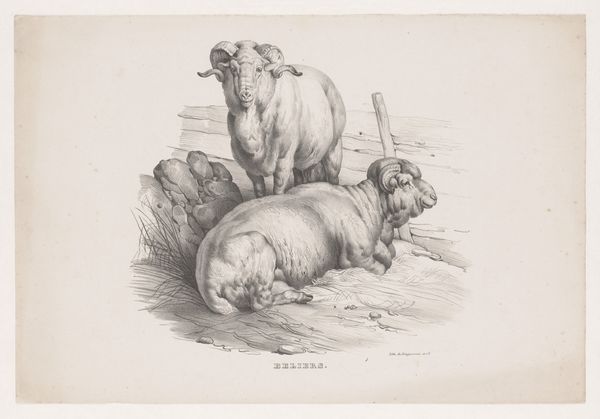
print, engraving
#
animal
# print
#
landscape
#
genre-painting
#
engraving
#
realism
Dimensions: height 480 mm, width 312 mm
Copyright: Rijks Museum: Open Domain
Curator: Ah, yes, here we have "Two Scenes with a Mule and a Wild Boar" by Victor Adam, created between 1837 and 1843. What catches your eye first? Editor: Well, that poor mule looks absolutely knackered. Burdened, right? You can practically feel the weight it's carrying, both physical and... I don't know, metaphorical. Curator: It's certainly a working animal, isn't it? Adam's realism brings out the sheer labor involved. Notice the detail in the engraving – how it emphasizes the harness, the rough terrain. I bet it was printed in fairly large numbers and destined for circulation, maybe as instruction, as visual reference for a manual of sorts. Editor: That's fascinating! So not high art, per se, but deeply functional? It definitely evokes a sense of everyday life; the second image features an equally burdened boar – the struggle for survival in a nutshell, or rather, in a print. The relationship between the man and mule seems strained—a silent negotiation of needs, all wrapped up in this gray and vaguely dusty composition. What did Adam mean to communicate by pairing this man-animal cooperation with the solitary and hungry boar? Curator: Good question! Maybe to showcase that animals often shoulder or bare, like materials, labor we humans exploit? This print seems to celebrate those often silent creatures that provide humans with nourishment or energy. How different in temper and implication these figures are. Did people at the time sense the double standard? Were they concerned at all with either animal's well-being? Editor: Right. And thinking about the production, the very material Adam uses...print...is so democratic. The scale feels humble, more a whisper than a shout—accessible, functional. Even now it urges you to examine closely not what we have, but what something requires to be made, brought into view, brought into being. Curator: Yes, its accessibility really underscores the mundane realities these animals faced, doesn't it? It avoids grand narratives and allows their individual "work" to resonate with an audience often oblivious to their toil. Editor: Absolutely. It's a small snapshot, perhaps, but powerfully focused. One that reminds me to think critically about the systems of labor and consumption, visible and invisible, around me. Curator: Indeed, a testament to the fact that even seemingly simple images can hold profound truths, once we bother to slow down and look.
Comments
No comments
Be the first to comment and join the conversation on the ultimate creative platform.
